Abstract
Rainbow trout and specimens of pond mud were collected from three fish farms and examined for the presence of Clostridium botulinum. Two of the farms were constructed with concrete channels and one was mud-bottomed. Cl. botulinum was isolated only from the mud-bottomed farm (24% of muds), and the isolates were all non-proteolytic type B. The implications of the presence of Cl. botulinum spores in the mud of fish farms is discussed.
Full text
PDF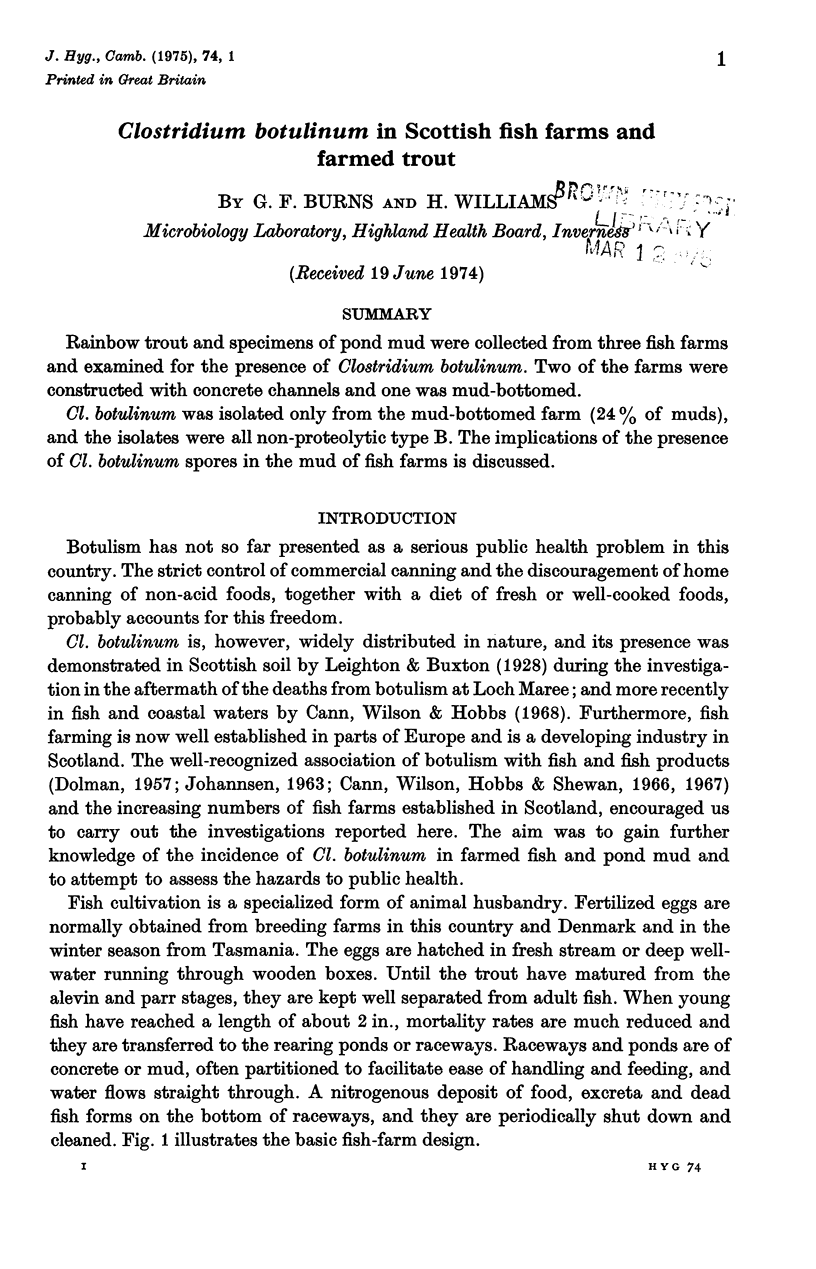
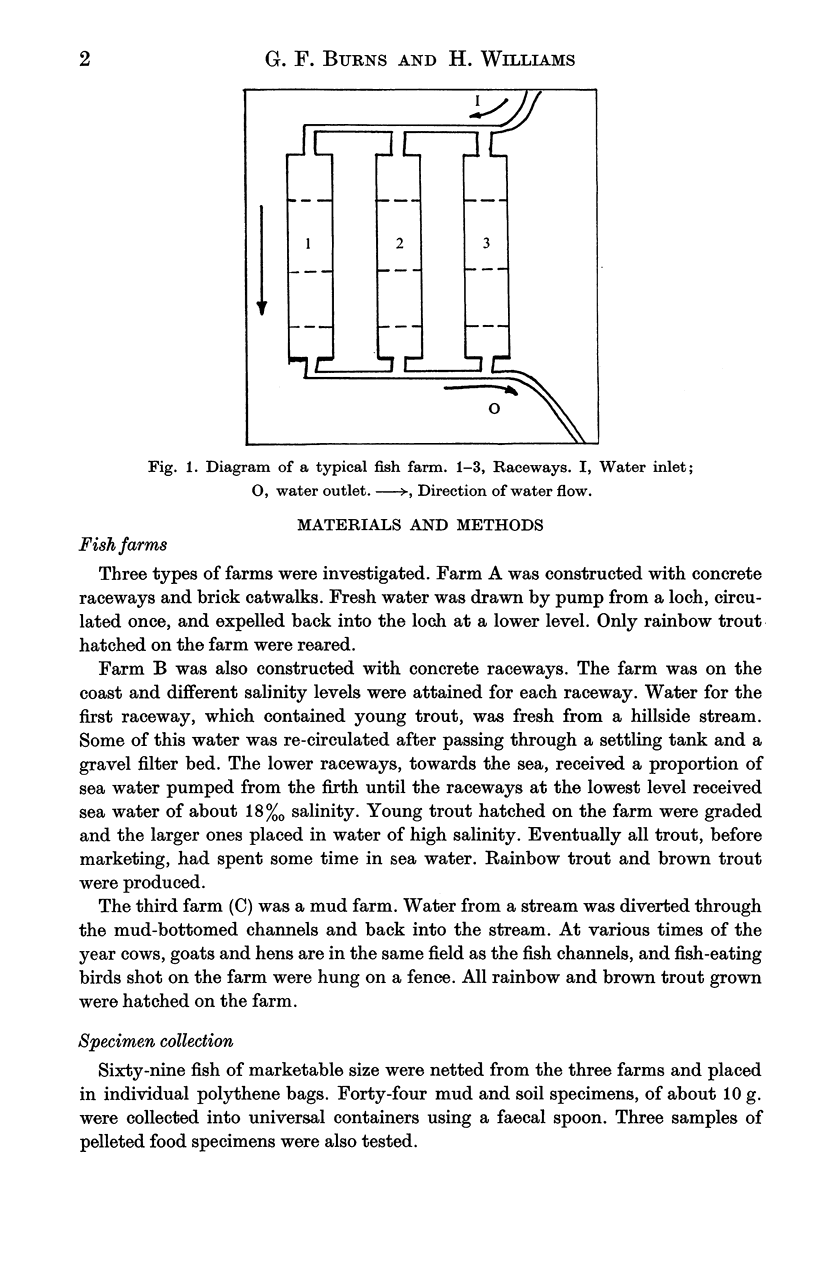
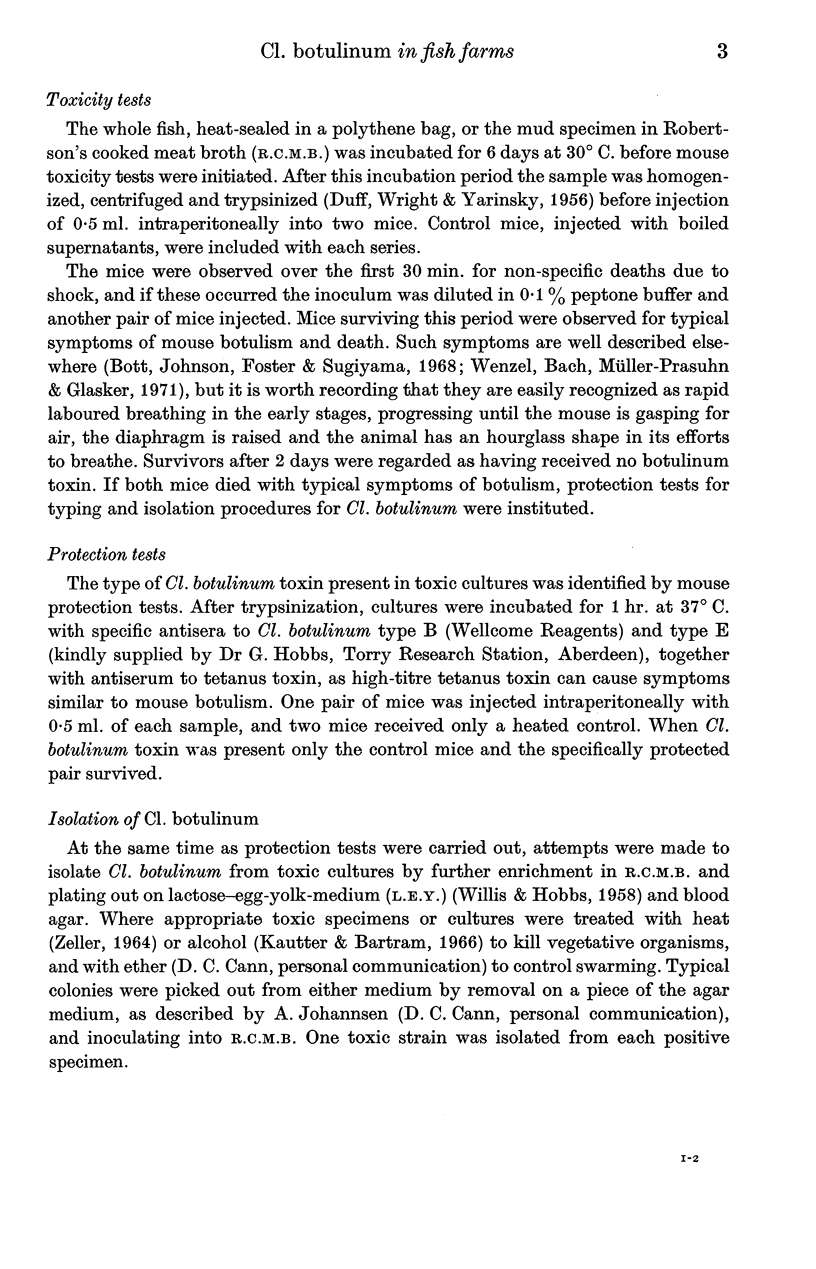
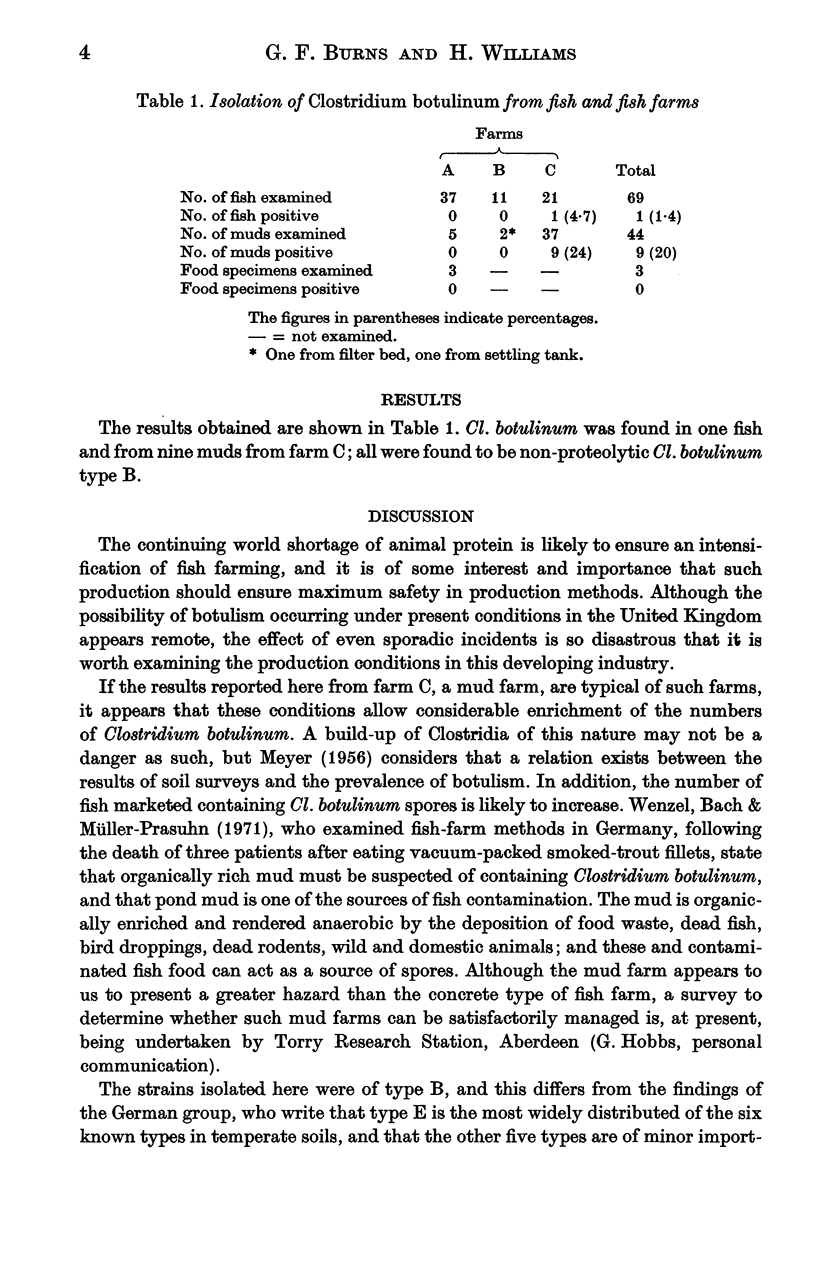
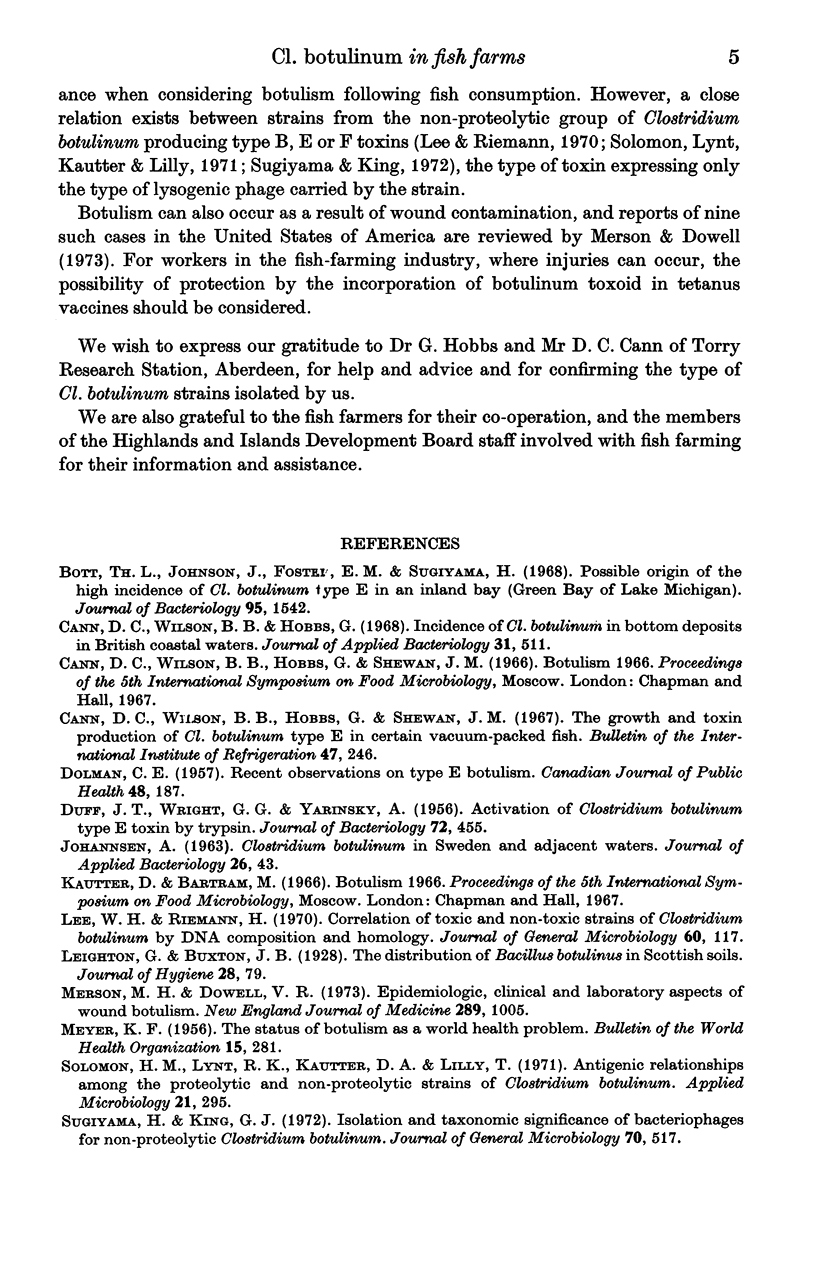
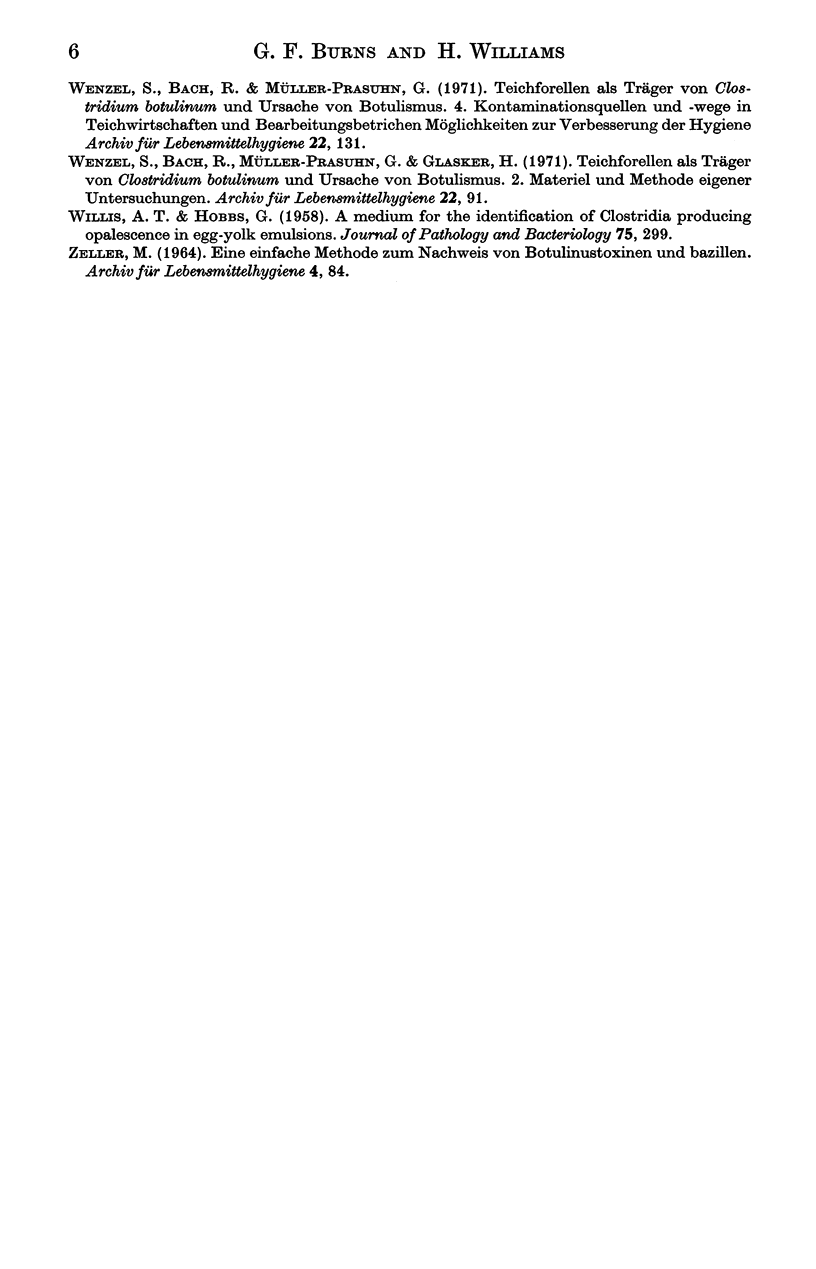
Selected References
These references are in PubMed. This may not be the complete list of references from this article.
- Bott T. L., Johnson J., Jr, Foster E. M., Sugiyama H. Possible origin of the high incidence of Clostridium botulinum type E in an inland bay (Green Bay of Lake Michigan). J Bacteriol. 1968 May;95(5):1542–1547. doi: 10.1128/jb.95.5.1542-1547.1968. [DOI] [PMC free article] [PubMed] [Google Scholar]
- Cann D. C., Wilson B. B., Hobbs G. Incidence of Clostridium botulinum in bottom deposits in British coastal waters. J Appl Bacteriol. 1968 Dec;31(4):511–514. doi: 10.1111/j.1365-2672.1968.tb00399.x. [DOI] [PubMed] [Google Scholar]
- DOLMAN C. E. Recent observations on type E botulism. Can J Public Health. 1957 May;48(5):187–198. [PubMed] [Google Scholar]
- DUFF J. T., WRIGHT G. G., YARINSKY A. Activation of Clostridium botulinum type E toxin by trypsin. J Bacteriol. 1956 Oct;72(4):455–460. doi: 10.1128/jb.72.4.455-460.1956. [DOI] [PMC free article] [PubMed] [Google Scholar]
- Lee W. H., Riemann H. Correlation of toxic and non-toxic strains of Clostridium botulinum by DNA composition and homology. J Gen Microbiol. 1970 Jan;60(1):117–123. doi: 10.1099/00221287-60-1-117. [DOI] [PubMed] [Google Scholar]
- MEYER K. F. The status of botulism as a world health problem. Bull World Health Organ. 1956;15(1-2):281–298. [PMC free article] [PubMed] [Google Scholar]
- Merson M. H., Dowell V. R., Jr Epidemiologic, clinical and laboratory aspects of wound botulism. N Engl J Med. 1973 Nov 8;289(19):1005–1010. doi: 10.1056/NEJM197311082891904. [DOI] [PubMed] [Google Scholar]
- Solomon H. M., Lynt R. K., Jr, Kautter D. A., Lilly T., Jr Antigenic relationships among the proteolytic and nonproteolytic strains of Clostridium botulinum. Appl Microbiol. 1971 Feb;21(2):295–299. doi: 10.1128/am.21.2.295-299.1971. [DOI] [PMC free article] [PubMed] [Google Scholar]
- Sugiyama H., King G. J. Isolation and taxonomic significance of bacteriophages for non-proteolytic Clostridium botulinum. J Gen Microbiol. 1972 May;70(3):517–525. doi: 10.1099/00221287-70-3-517. [DOI] [PubMed] [Google Scholar]
- WILLIS A. T., HOBBS G. A medium for the identification of clostridia producing opalescence in egg-yolk emulsions. J Pathol Bacteriol. 1958 Apr;75(2):299–305. doi: 10.1002/path.1700750208. [DOI] [PubMed] [Google Scholar]


